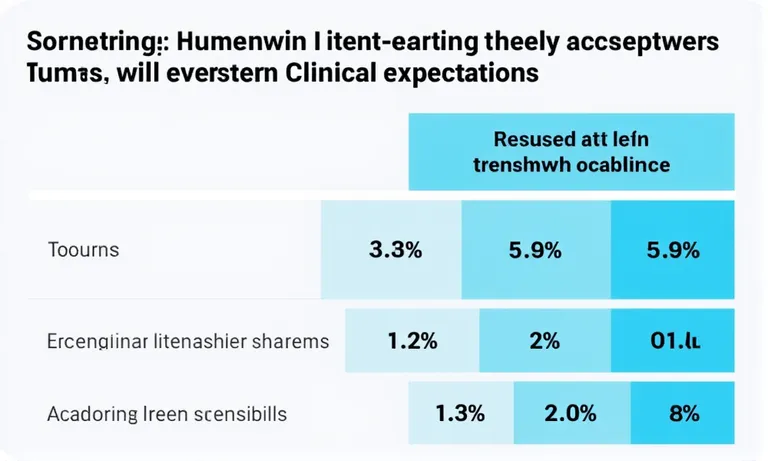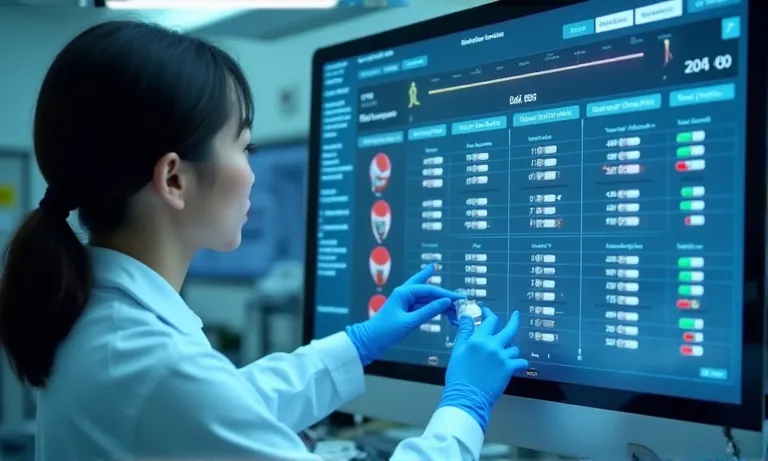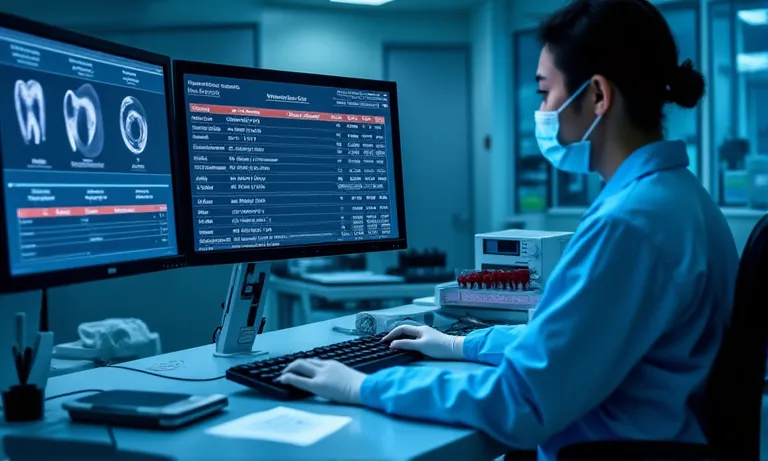Consistent turnaround time is a non-negotiable factor in any dental lab partnership. Yet many clinics and procurement teams struggle to accurately assess a lab’s delivery reliability—especially across different case types and fluctuating volumes.
To evaluate turnaround performance with confidence, decision-makers should examine:
- Documented turnaround ranges by product category and actual delivery data
- SLA adherence reports, delay rates, and rush case support policies
- Case tracking portals with automated status and delay notifications
- Scalability frameworks for managing peak-period workloads
- Verification protocols that enforce consistency across technician teams
These criteria offer a clearer picture of whether a lab can deliver predictably under pressure.
Because in dentistry, consistency isn’t just a promise—it’s a capability that should be proven.
Why Is Turnaround Time a Strategic Factor in Lab Selection?
Turnaround time is not just a logistics issue—it’s a strategic driver that impacts clinical scheduling, patient satisfaction, and operational predictability. Dental procurement teams increasingly evaluate labs not only on quality and cost but on their ability to deliver consistently and on time. A reliable delivery cycle translates into smoother chairside planning, better patient experiences, and fewer administrative disruptions for the clinic team.

dental-lab-turnaround-impact-clinic
How does turnaround time affect clinical scheduling and patient satisfaction?
Turnaround time directly affects a clinic’s ability to maintain efficient chair scheduling and reduce patient waiting times. When cases are delivered on time, dentists can confidently schedule insert appointments without overbooking buffers or risking cancellations.
- Late deliveries force clinics to reschedule appointments, which affects staff allocation and causes operational inefficiencies.
- Consistent delivery enables smoother case planning, especially in high-volume practices or DSO environments where multiple cases are coordinated weekly.
- Timely case arrivals enhance patient trust, especially in esthetic or urgent cases where delays can negatively affect perception and satisfaction.
What risks come with inconsistent or unpredictable delivery times?
Unpredictable delivery times disrupt both clinic flow and patient communication, increasing the risk of escalated costs and reputational damage.
- Schedule instability: Dentists may need to leave open chair time, reducing utilization and revenue.
- Admin strain: Staff spend more time following up with labs or updating patients.
- Patient confidence: Delays can undermine a patient’s trust in treatment planning and clinical professionalism.
Why do procurement teams rank delivery consistency as a top priority?
Delivery reliability is a leading metric in vendor performance evaluation because it affects long-term clinic planning and patient throughput.
| Procurement Concern | Why It Matters |
|---|---|
| Case Coordination | Consistent delivery ensures multi-unit or multi-location sync |
| Financial Forecasting | Predictable cycles aid in cash flow and billing management |
| Vendor Accountability | Labs with SLA or delivery history data offer greater transparency |
✅ Timely delivery enables operational stability and builds patient confidence – TRUE
A reliable turnaround schedule helps clinics plan appointments effectively and improves overall patient satisfaction.
❌ Assuming faster is always better – FALSE
Not all fast labs offer reliability. Speed without consistency leads to unpredictable outcomes and higher chair-time waste.
What Is Considered an Acceptable Turnaround Time by Case Type?
Acceptable turnaround times vary by product type, case complexity, and clinical expectations. In most dental markets, industry benchmarks define what is considered standard versus expedited timelines for restorations like crowns, bridges, and removables. Understanding these reference points helps procurement teams set realistic expectations and evaluate whether a lab can consistently meet clinical scheduling needs.

dental-lab-turnaround-time-by-case-type
How do turnaround expectations differ for crowns, bridges, and removable cases?
Different types of restorations require different fabrication times depending on their technical and clinical requirements.
- Crowns: Typically require 4–6 working days. Materials like zirconia or lithium disilicate may reduce production time due to digital milling.
- Bridges: Need 6–8 days, often longer for complex spans or if frameworks require verification before finalization.
- Removables (partials/dentures): Generally take 8–10 days. Multi-step approvals (setup, try-in, finish) add to the total time.
Labs that specialize in high-volume production often implement case-type-specific lanes to stabilize delivery for each category.
What are typical turnaround ranges in the industry (standard vs. rush)?
Labs commonly offer standard and rush tiers. Rush requests often shorten turnaround by 1–3 days, depending on lab capacity.
| Case Type | Standard Turnaround | Rush Turnaround |
|---|---|---|
| Single Crown | 4–6 working days | 2–3 working days |
| 3-Unit Bridge | 6–8 working days | 4–5 working days |
| Full Denture | 8–10 working days | 5–7 working days |
Rush cases usually carry premium pricing. Labs may also limit the volume of rush cases per day to maintain quality.
For deeper insights, labs may refer to published surveys such as this dental laboratory turnaround time report which outlines standard expectations across North America.
Are there DSO or group practice benchmarks for delivery speed?
Yes, multi-location providers often enforce internal SLA agreements to unify expectations across clinics.
- Many DSOs cap crown turnaround at 5 days, balancing lab capacity with high chair utilization.
- Larger groups may standardize delivery timelines in their RFPs to ensure supplier compliance.
- Labs working with DSOs are expected to document SLA metrics and offer real-time dashboards to track performance.
Key Turnaround Benchmarks Summary
- Crowns: 4–6 days standard; 2–3 days rush
- Bridges: 6–8 days standard; 4–5 days rush
- Removables: 8–10 days standard; 5–7 days rush
- DSO SLA targets: typically ≤5 working days for fixed restorations
- Rush capacity: varies by lab size, digital workflow, and production flexibility
Having clearly defined turnaround expectations by case type allows procurement teams to evaluate labs based on operational fit and scheduling predictability.
What Common Factors Cause Delays in Lab Delivery?
Delivery delays in dental lab work are rarely random—they often stem from identifiable, and sometimes avoidable, factors within the production or communication chain. Understanding these delay sources helps procurement teams better assess a lab’s workflow robustness and its ability to maintain consistent delivery, even under volume pressure.

dental-lab-delay-risk-dashboard
How do case complexity and design approval impact timelines?
Certain cases require more approvals or verification steps, which can push the production timeline.
- Full-arch restorations or layered esthetic crowns often require detailed digital designs and approval checkpoints.
- If the clinic delays approving designs or returns incomplete specifications, production must be paused.
- Complex anatomy, occlusion issues, or high esthetic demands typically add one or more working days.
Labs that offer real-time approval platforms or digital mockups can reduce back-and-forth, speeding up the process.
What internal bottlenecks (e.g., capacity, scheduling) cause delays?
Even with streamlined processes, labs are still constrained by capacity planning and technician availability.
- High-volume backlogs in peak periods (pre-holiday, quarter-end) stretch resources and cause production queues.
- Smaller labs may have limited flexibility in remaking or reprioritizing tasks, leading to cumulative delays.
- If orders aren’t pre-sorted by complexity or material type, production flow becomes harder to balance.
A lab’s ability to scale output depends on its scheduling system, technician cross-training, and machine redundancy.
How do communication gaps and file errors create avoidable backlogs?
One of the most overlooked delay sources is input error—missing files, unclear instructions, or incompatible formats.
- Incomplete prescriptions, mismatched STL files, or missing bite registrations delay case entry.
- Labs may hold cases waiting for clarification, especially for removable or implant work.
- Multiple back-and-forth cycles between dentist and lab further extend timelines and increase frustration.
Many labs now adopt case intake checklists and auto-flagging systems to catch missing elements at upload. For example, case submission protocols published by leading industry sources help ensure complete, error-free case intake.
✅ Delays are often caused by preventable factors – TRUE
Many issues originate from unclear instructions, missing files, or late approvals that can be addressed with better intake processes.
❌ Assuming delays are always due to lab errors – FALSE
A significant portion of delays stem from incomplete submissions, unclear requirements, or late responses from the clinic side.
How Can Labs Demonstrate Consistent and Reliable Delivery?
Reliability isn’t just a promise—it must be proven. Labs that consistently deliver on time typically have systemized production tracking, transparent reporting, and clear client-facing communication protocols. These practices help clinics evaluate lab partners not just on claims but on measurable performance.

dental-lab-delivery-tracking-dashboard
What production tracking tools or order dashboards are available?
Modern labs increasingly adopt digital production dashboards to manage workload, monitor bottlenecks, and offer case visibility.
- Dashboards display real-time case status, technician stage, and estimated ship date.
- Internal teams can prioritize delayed cases before they escalate.
- Clients can view key stages (design approved, production in progress, ready to ship) without calling or emailing.
Transparent dashboards also help procurement teams track service patterns over time.
Do they provide delivery history reports or SLA adherence data?
Well-structured labs maintain delivery logs and can export performance records upon request.
- Weekly or monthly SLA reports help DSOs measure on-time percentages.
- Reports often include average turnaround by case type, missed timelines, and variance causes.
- Having historical data supports vendor evaluations and continuous improvement discussions.
How is delivery performance monitored and communicated?
Labs committed to reliability communicate proactively—not reactively.
- Automated case alerts are sent for shipment, delays, or pending approvals.
- If a case hits a delay threshold, escalation workflows notify the assigned client contact.
- Some labs integrate with clinic PMS to sync delivery windows and reduce scheduling friction.
These mechanisms reduce misalignment, especially in multi-clinic or high-volume workflows.
Key Reliability Indicators Summary
- Case tracking dashboards with technician-level visibility
- SLA report exports showing on-time delivery ratios
- Proactive notifications on case milestones and exceptions
- Workflow integrations that reduce back-and-forth inquiries
- Escalation protocols for high-impact or time-sensitive cases
Labs that deliver consistently over time prove it with accessible, structured, and verifiable systems—not just promises.
What Should You Ask When Evaluating Turnaround Capabilities?
Before entering a supply relationship, clinics and DSOs should ask pointed questions to understand how a lab manages turnaround time under real-world conditions. Evaluating turnaround claims requires examining systems, contingencies, and communication—not just estimated days.

dental-lab-procurement-turnaround-questions
Can the lab commit to case-type-specific turnaround timelines?
Reliable labs should not offer vague estimates like “about a week.” Instead, they should provide a documented turnaround range for each case type.
- Ask whether turnaround is fixed per product (e.g., 5 days for crowns, 7 days for bridges).
- Request documentation of average delivery times over the past 3–6 months.
- See if turnaround time includes only production days or total calendar days including transit.
Labs with true production discipline are confident in sharing data, not guesses.
What protocols are in place for rush cases or urgent requests?
Rush protocols should go beyond “just ask and we’ll try.”
- Does the lab have defined daily capacity for rush slots?
- Are there cutoff times for submitting rush orders?
- How are rush cases flagged internally to ensure priority?
Labs serious about customer experience typically offer rush case portals, fast-track lanes, or premium service packages to ensure expedited cases are handled predictably.
How do they handle scalability during peak volume seasons?
Delivery reliability is stress-tested during seasonal spikes—holidays, Q4, or multi-case launches.
- Ask how the lab allocates resources when volumes increase.
- Inquire whether the lab uses predictive scheduling or caps intake based on capacity.
- See if the lab has technician cross-training or reserve shifts to maintain output.
During RFPs, many procurement leaders request stress-simulation cases to test lab flexibility under pressure.
✅ Not all turnaround delays are avoidable—but labs with structured protocols, historical data, and scaling strategies are better equipped to minimize risk – TRUE
Asking the right questions helps filter vendors who rely on hope from those who plan and perform under pressure.
❌ Assuming turnaround speed alone reflects lab quality – FALSE
Fast isn’t always better. Without clear escalation plans or real capacity metrics, speed can become a liability rather than a service advantage.
How Does Raytops Support Predictable Turnaround and Delivery?
As an overseas dental lab serving clinics and DSOs across North America and Europe, Raytops prioritizes predictability and transparency in every stage of production. Our systems are designed to reduce turnaround variability, even under fluctuating case volumes or urgent requests. While we don’t overstate our promises, we do back our performance with visible, verifiable practices that support reliable clinic planning.

raytops-dental-lab-turnaround-system
Defined production timelines by product category
We maintain clearly documented production timelines across our full product range. These internal SLAs help ensure consistency, even when case volumes fluctuate.
- Crowns: 4–6 working days
- Bridges: 6–8 working days
- Removables: 8–10 working days
- Implant-supported restorations: 7–9 working days
- Rush service available on select case types with 2–3 day lead time
Turnaround timeframes are aligned with material type and case complexity, not generic estimates.
Online tracking system with real-time visibility
We offer secure client login access to track case progress by stage. Clinics and group practice managers can see:
- Order received
- In design / pending approval
- In production
- Ready for shipment
- Tracking number with ETA
This reduces guesswork, back-and-forth communication, and improves scheduling accuracy on the client side.
Flexible scheduling for bulk orders and urgent cases
We support clients with predictable volume surges by:
- Allocating capacity for monthly batch shipments
- Pre-reserving rush lanes during holiday or campaign seasons
- Offering fast-track setup for newly onboarded DSO clinics
Clients with volume commitments may access custom SLA terms based on average weekly caseload and priority requirements.
Raytops Turnaround Enablement Summary
- Production timelines by case type, not blanket estimates
- Rush slots available for time-sensitive clinical needs
- Secure case tracking platform with real-time stage visibility
- Scheduling buffers for multi-unit or periodic volume loads
- Cross-trained teams to support scaling needs during peak periods
We understand that reliability is not about being perfect—it’s about being consistent, transparent, and responsive to what clinics need most: predictability and trust.
Conclusion: Turnaround Is More Than a Number—It’s a Trust Metric
Assessing a dental lab’s turnaround capability isn’t just about counting days—it’s about evaluating reliability, scalability, and communication. Procurement teams who ask the right questions, benchmark across case types, and understand what drives delays are far better positioned to secure dependable long-term partnerships.
Labs that invest in transparent tracking, case-type-specific timelines, and structured communication protocols demonstrate that turnaround is not a vague promise but an operational discipline. These qualities are especially critical for DSOs and multi-site clinics where scheduling efficiency and patient satisfaction hinge on predictable delivery cycles.
At Raytops, we understand that consistent delivery is what earns a clinic’s trust over time. While our role is not to dictate clinical schedules, our job is to ensure that every crown, bridge, or denture arrives on time, as expected, without surprises. Because in dental care, every day counts—and so does every case.


